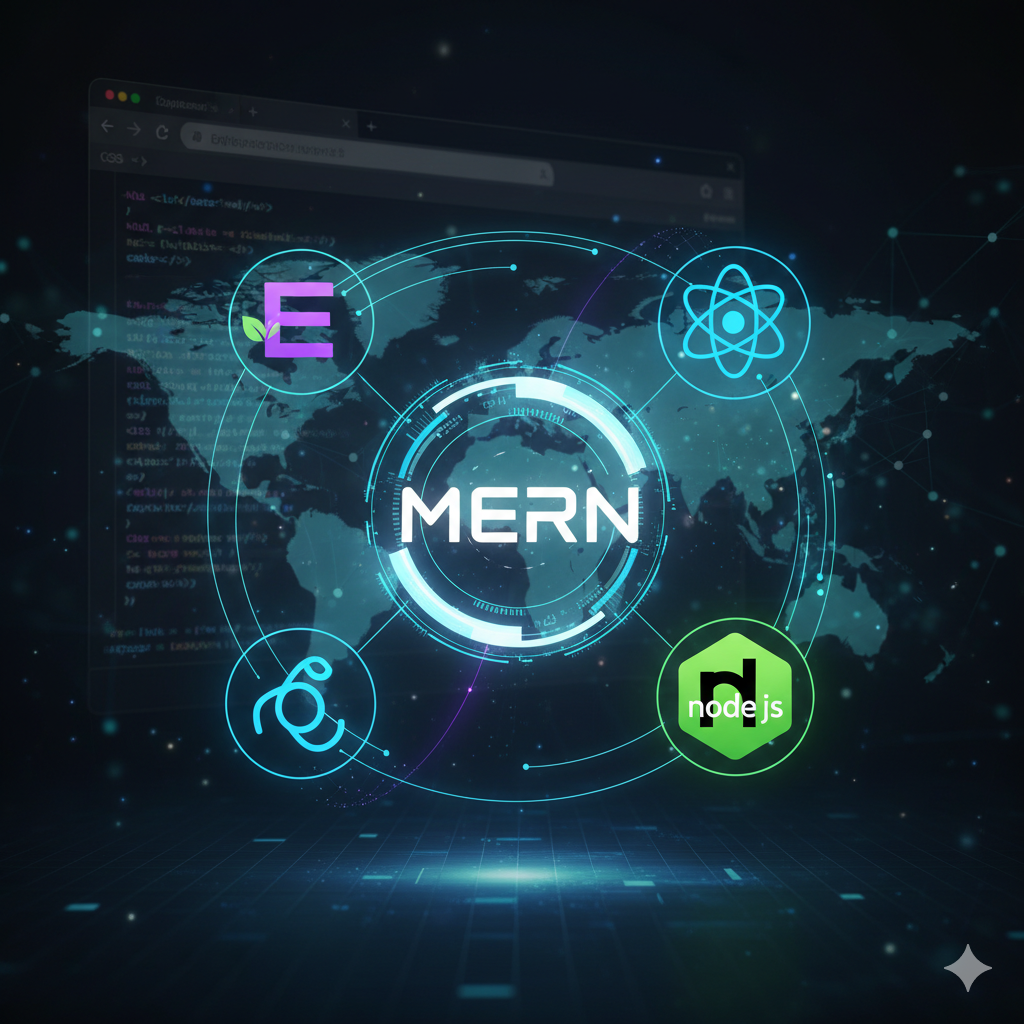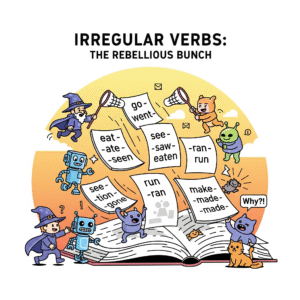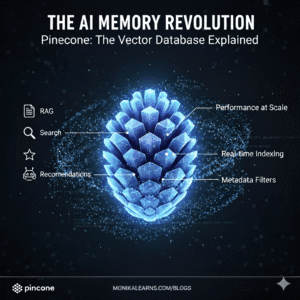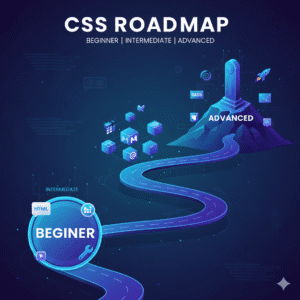Table of Contents
MERN stack is one of the most popular technology stacks used in modern web development. But before diving into what MERN stands for and how it works, it’s essential to understand the fundamentals of the internet, web technologies, and the building blocks of web applications. In this guide, we’ll cover everything from how the internet works to the basics of HTML, giving you a strong foundation for learning the MERN stack.
How the Internet Works
At its core, the internet is a global network of computers that communicate with each other. When you type a website address into your browser, your request travels through different layers:
- Browser request – You type a URL like
www.google.com. - DNS resolution – The domain name is translated into an IP address.
- Server communication – Your request reaches the server where the website is hosted.
- Data transfer – The server responds with HTML, CSS, and JavaScript files.
- Rendering – Your browser renders the content so you can interact with the website.
🔗 External resource: How the Internet Works – Mozilla
Fundamentals of Web Technology
Web technology is built on three main layers:
- HTML (HyperText Markup Language): The structure of a webpage.
- CSS (Cascading Style Sheets): The design and layout.
- JavaScript: The interactivity and logic.
Together, these make up the frontend of websites. The backend handles server logic, databases, and APIs.
Software Development Life Cycle (SDLC) in Web Development
Like any software project, web applications follow the SDLC process:
- Requirement analysis – What problem does the app solve?
- Design – Wireframes, UI/UX mockups, database design.
- Development – Writing code (frontend + backend).
- Testing – Checking for bugs and errors.
- Deployment – Hosting the app on servers.
- Maintenance – Updates and bug fixes.
The MERN stack fits neatly into this process by providing JavaScript-based tools for both frontend and backend development.
Different Web Development Stacks
- LAMP stack: Linux, Apache, MySQL, PHP.
- MEAN stack: MongoDB, Express.js, Angular, Node.js.
- MERN stack: MongoDB, Express.js, React.js, Node.js.
- Django stack: Django (Python) + PostgreSQL.
The MERN stack stands out because developers can use JavaScript everywhere — from frontend to backend.
URL and Protocols
A URL (Uniform Resource Locator) is the address of a web resource. Example:
https://www.example.com/blog/article
- Protocol:
https(secure version of HTTP). - Domain name:
example.com. - Subdomain:
blog.example.com. - Path:
/article.
Top-Level Domains (TLDs) Examples:
.com→ commercial.org→ organizations.edu→ education.in→ India
🔗 External resource: ICANN – Domain Names & TLDs
Server, Domain Name, and Subdomain
- Server: A computer that stores your website files and delivers them when requested.
- Domain Name: A human-readable address (like
google.com). - Subdomain: A prefix that organizes or separates content (
mail.google.comis Gmail).
Online Code Editors
If you’re just starting out, you don’t need heavy tools. Some popular online editors include:
These editors allow you to experiment with HTML, CSS, and JavaScript directly in the browser.
Basics of Web Applications
A web application is a software program that runs on a web server and is accessed through a browser. Examples include:
- Gmail (email web app)
- Facebook (social media app)
- Amazon (e-commerce app)
The MERN stack is widely used to build scalable web applications like these.
Introduction to HTML
HTML is the backbone of web pages. Every web page starts with an HTML document. Example:
<!DOCTYPE html>
<html>
<head>
<title>My First Page</title>
</head>
<body>
<h1>Hello World!</h1>
<p>This is my first webpage.</p>
</body>
</html>
HTML Tags
Tags are the building blocks of HTML. They usually come in pairs:
<p>This is a paragraph.</p>
Some common tags:
<h1>to<h6>→ Headings<p>→ Paragraph<a>→ Hyperlink<img>→ Image<ul>,<ol>,<li>→ Lists
Elements, Attributes, and Comment Lines
- Element: Combination of start tag, content, and end tag.
<p>Hello World</p> - Attribute: Extra information inside a tag.
<a href="https://google.com">Google</a> - Comment: Used for notes inside code.
<!-- This is a comment -->
Heading Tags in HTML
Headings range from <h1> (most important) to <h6> (least important).
Example:
<h1>Main Title</h1>
<h2>Sub Title</h2>
<h3>Section Heading</h3>
Search engines (like Google) give more importance to <h1> and <h2> tags, making them critical for SEO.
Why Learn the MERN Stack?
- One language (JavaScript) across frontend, backend, and database.
- Scalability – Perfect for startups and enterprise apps.
- Strong community support – Huge ecosystem of libraries and frameworks.
- Full-stack power – React for frontend, Node + Express for backend, and MongoDB for database.
External resource: MERN Stack Guide
Final Thoughts
Learning the MERN stack is not just about learning four technologies (MongoDB, Express, React, and Node). It’s about understanding how the internet works, how web applications are built, and the fundamentals of web technologies. Once you master HTML, CSS, and JavaScript, diving into the MERN stack will be much easier.
Whether you’re building a personal portfolio, a business app, or a social media platform, MERN provides the flexibility and scalability you need.
My Handwritten Notes
You May Also Like
- Java Introduction to Programming: My Exciting Day 1 Journey from Zero to Beginner
My personal first-day experience learning Java — from setting up the environment to writing my very first program. - Java Learning Roadmap 2025 – From Zero to Hero
A step-by-step guide to how I plan to learn Java in 2025, perfect for beginners like me. - Aptitude Tricks for Beginners – Easy Mental Math Techniques
Quick tricks for multiplication, LCM, squaring, and cubes — useful for placement and coding exams. - Types of Nouns in English Grammar – Simple Explanation with Examples
Learn all types of nouns clearly with examples — great for communication skills and competitive exams. - Data Cleaning with Titanic Dataset – A Beginner’s Guide
Learn the complete, beginner-friendly process of cleaning and preparing the Titanic dataset for machine learning, with practical examples and tips. - History Of Java Programming Language




